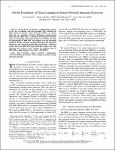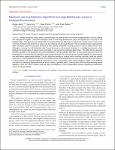BBTác giả: Otoum, S.; Người hướng dẫn: -; Người tham gia: Kantarci, B.; Mouftah, H. T. (2019)
In this letter, we present a comprehensive analysis of the use of machine and deep learning (DL) solutions for
IDS systems in wireless sensor networks (WSNs). To accomplish this, we introduce restricted Boltzmann machine-based clustered IDS (RBC-IDS), a potential DL-based IDS methodology for monitoring critical infrastructures by WSNs. We study the performance of RBC-IDS, and compare it to the previously
proposed adaptive machine learning-based IDS: the adaptively supervised and clustered hybrid IDS (ASCH-IDS). Numerical results show that RBC-IDS and ASCH-IDS achieve the same detection and accuracy rates, though the detection time of RBC-IDS is approximately twice that of ASCH-IDS. Index Terms—Wireless sensor network, cybersecurity, 


